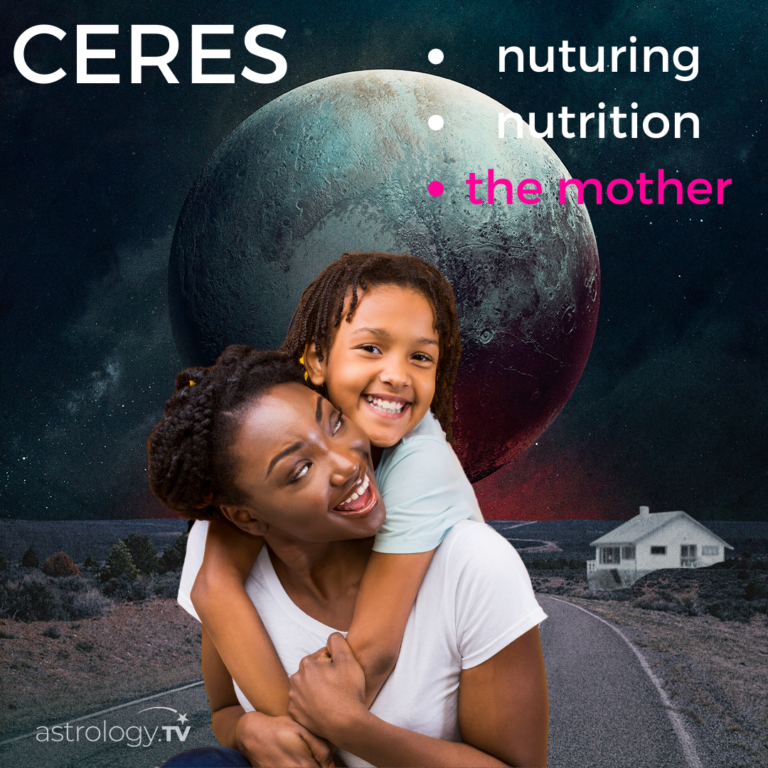
Ceres is frequently mentioned as the mythological archetype of Mother Earth. She reflects both our nurturing needs and how we nurture others. It is how we were raised as children and how we raise our own children, as well as all the individuals with whom we choose to connect. Ceres energies can also be controlling or permissive, frigid or overwhelming, much like human caregivers. On the other hand, Ceres rules over much more, and she, too, has a dark side. Sure, she walks about waving those wheat stalks. But what about the poppies and the snake moving beneath the wheat we are seeing? Ceres' lesser-known emblems offer the key to comprehending her.
Ceres in the Mythology
Also known as Demeter to the Greeks, she was the goddess of agriculture who toiled tirelessly to provide food and nutrition to the inhabitants of the earth. One of the great classical stories describes Pluto, the lord of the underworld, ravaging and abducting her daughter Persephone. Ceres, bereaved, traveled the earth in quest of her vanished child. In her grief, depression, and rage, she induced a famine by withholding all food production until her daughter was restored.
Meanwhile, Persephone had eaten pomegranate seeds, a symbol of sexual awareness, giving Pluto a claim on her, preventing her from being permanently returned to her mother. Persephone would spend part of each year in the underworld with Pluto caring for the souls of the dead, but would be reunited with her mother in the upper world each spring as she introduced the dead into the ceremonies of rebirth. For nearly two thousand years, this drama was performed as part of the Eleusinian mysteries' initiation procedures in ancient Greece.
Ceres in our daily life
Ceres represents the aspect of our nature that desires to give birth and then nourish and sustain the new life. She represents the fundamental bonding that happens between mother and child, or the absence thereof. She is the drive not only to nurture, but also to be nurtured by others via acceptance and unconditional love.
Ceres and Persephone's story refers to the complex mother-child bond, highlighting the interplay of closeness and separation, of caring and eventual letting go as the kid grows into an adult capable of functioning on her or his own. After letting go, the child is free to restore the link in a different way by being a friend to the parent and having grandchildren.
The Ceres myth also includes themes such as great physical or emotional loss, separation, abandonment, rejection, and alienation between parents and children, as well as later in life with other loved ones. One example is the sorrow we feel when we have to share our children with their other parent after a divorce or adoption. Ceres represents our attachment to what we have given birth to or created, as well as the sorrow of losing it. Her tale is one of loss, but it is also one of return, of death and rebirth. Ceres can teach us the lesson of letting go by reminding us that loss creates space for fresh birth.
Giving food as a sign of love is an important aspect of Ceres bonding. This nourishment and love may have been freely given to us as youngsters. In other cases, it is given conditionally, withheld as a kind of punishment, imposed on us, or just ignored. The child's self-esteem and self-worth are therefore weakened and underdeveloped, resulting in a slew of psychological issues.
Ceres became immobile as a result of her sadness. Another Ceres difficulty is being immersed into deep sadness or despair, rendering us incapable of daily functioning, work, and all other sorts of production. Working through the phases of grief (shock, anger, bargaining, sadness, and finally acceptance) can help to promote healing in times of loss, to the extent that depression is related with incomplete mourning.
Another theme is Persephone, her daughter, being taken by Pluto, her mother's brother. This reflects parental concerns about protecting their children from similar danger. .
As the Mother of the World, she causes us to care about the homeless and hungry, as well as the depletion of the earth's resources, on a transpersonal level. She encourages us to take compassionate action to meet basic human needs and to care for the earth's body, which supports and maintains us.
Ceres not only gave birth to the living, but also received the souls of the dead back into her womb as Persephone to prepare them for rebirth. She can thus manifest as a vocation for midwifery or hospice work, easing the transition from death to life and back again on both a physical and psychic level.
Ceres embodies the profound transformational truth, that from death flows new life. This stems not only from Persephone's tragedy, but also from the nature of food, which constantly necessitates the taking of plant or animal life in order to feed our own lives.
Ceres also offers the wisdom that attachment and possessiveness lead to loss, whereas sharing and letting go leads to reunion.
Ceres in your natal chart
The astrological sign in which Ceres is placed in, represents the nurturing quality you experienced as a youngster. This lays the groundwork for how you currently nurture the kid within yourself, and ultimately how you nurture others. Ceres' sign position might alert you to potential issues with nurturing and point you to the types of experiences you require to feel totally loved and accepted.
Other characteristics in the chart, like as aspects and houses, may confirm or contradict these indications. As a result, to gain a complete perspective, read through the entire section on each asteroid.
Aside from the Fourth House, which represents your early childhood, the house in which Ceres resides indicates where or in what area of life you may most directly sense the need for mothering and nurturing. Ceres' house placement also indicates the areas in which you are going to experience the most devastating losses. Furthermore, it can indicate which kind of events will develop feelings of self-love or self-criticism and rejection.
Ceres' aspects to other planets and asteroids reveal how her nurturing qualities interact with the concerns of the other gods and goddesses in your natal chart. If her aspects amplify the ideas offered by her sign and house, these themes will undoubtedly manifest in your life. If the elements oppose the themes of the sign and house in some manner, they may create interesting tensions that may require some imagination and practice to overcome.
Ceres' major archetype is that of the mother. She not only provides food, but also spiritual sustenance and hope that life will be reborn from the Underworld. She represents not only the mother's caring traits, but also the ebb and flow of women's reproductive cycles, which are linked to the Moon. The giving of food to others is a trademark of the Ceres archetype, as Ceres ruled over the harvest's bounty. Ceres was the most benevolent goddess of all, providing care on all levels.
Depression and loss are by the other hand, two negative aspects of the Ceres archetype. The depression of Demeter at the death of her daughter was so severe that she withdrew and would willingly cause the extinction of humanity through famine. She can't take the thought of losing her adult child, who has left the house to start her own life and marriage. In her destructiveness, Ceres almost appeared to be overtaken by her grief and legend. What nourishes eventually turns into what destroys.































